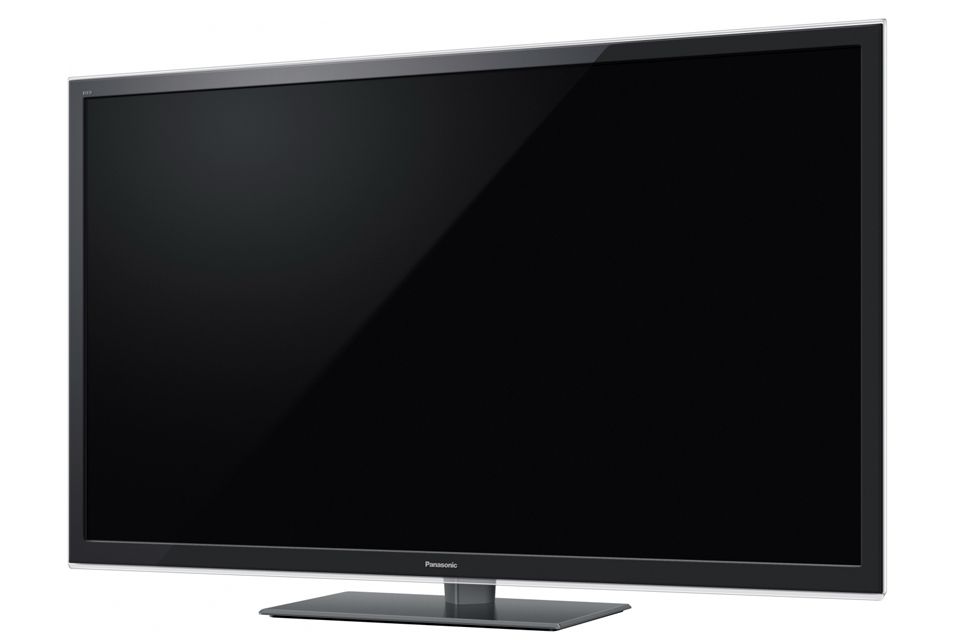Firmly in the Smart VIERA LED stable, you'd be forgiven for thinking that the Japanese manufacturer's marrying of VIERA Connect, 3D and DLNA home networking make this a classic Panasonic LCD TV.
Our quick take
There are sharper TVs and there are TVs that better treat dodgy sources, but this 37-incher's aces are hard to ignore; a genuinely engaging Wi-Fi fueled Smart TV dimension and relaxed, good value 3D chops see it through.

Panasonic TX-L37ET5 - 4.0 / 5
| FOR | AGAINST |
|---|---|
|
|
It might shock you to know that the king of plasma TVs has run off to LG to source this Edge LED panel, and in doing so has embraced the "passive" Easy 3D system that the Korean firm backs. This is a surprise, because it's technically the least-detailed form of 3D, but it's also cheapest. It's also a format that Panasonic hasn't been much in favour of so far.
This 37-inch LCD TV – the only one of its type in Panasonic's 3D arsenal that doesn't employ the pricier, pixel-ier "active shutter" 3D system – does represent a move away from its ideal position. It also represents a loosening of grip on picture quality, and it shows. But probably not enough to dissuade us from ranking the TX-L37ET5B as a worthy candidate for a family room after a hassle-free dose of 3D.
There are four pairs of super lightweight 3D glasses in the box, which can be replaced or added to for just a few quid each. The glasses are also completely passive, requiring no batteries, and don't produce any flicker or glare. Which means no matter how many kids you throw at them, buying replacements will never bankrupt you.
Ins and outs
Here we're strictly Panasonic, with its usual strapping of four HDMI inputs to the TX-L37ET5B's chassis. Now that's handy, as is the provision of three USB inputs. One can be used to record from its integrated Freeview HD tuner, while the other two are powered - probably a leftover from Panasonic's active shutter 3DTVs, which need to recharge their 3D specs - though either can also accept USB sticks or a Skype webcam.
Component video and composite video ins are also present, albeit via adaptors, as well as optical digital audio, headphones, a PC slot and some RCA audio jacks. Best of all there's a SD card slot, which can be used to display photos, music and video.
VIERA Connect
Whether the re-badging of an LG panel under the Panasonic brand is meaningful depends largely on the operating system, processing and smart TV shenanigans.
VIERA Connect has so far been a smart TV platform looking for some love, but it's set to come from under the shade of Samsung and Sony's efforts in 2012. New for 2012 is Netflix and the engaging iConcerts, and though Lovefilm is still absent, BBC iPlayer, YouTube, Twitter and Facebook remain.

Skype video calling is on board, too, if you're prepared to shell-out for a camera, while a web browser makes its debut in the app-filled Marketplace. Don't bother with browsing – it's far too clunky to overtake even a smartphone – though the Marketplace is worth investigating.
Apps aside, we still love the way each VIERA Connect screen plays a live TV channel or DVD/Blu-ray disc in a central window, not forgetting the sheer speed of the GUI as a whole. Some hate the fact that multiple screens need to be navigated between because of their seven-app limit, but customisation is simple to the extent that creating a page containing your most oft-used apps is hardly time-consuming.
Networking
Like most Panasonic TVs the TX-L37ET5B makes a gallant effort at being a de facto media streamer. Besides the ability to play FLAC as well as MP3 music files, the inconsistencies of digital video file support leave us thinking that pure plug 'n' play will probably always be a pipe-dream in the world of TVs. It's possible to play AVC HD, AVI and MKV files from USB, while over a network that changes to MOV, MP4, AVC HD and AVI.
2D & 3D Picture quality
The TX-L37ET5's Easy 3D system makes it a soft touch. It's not that we're massively bothered about Sky 3D broadcasts looking soft, nor the kiddies' films that seem to make-up 90 per cent of 3D fare, but an innate softness rules over everything, both 2D and 3D. Particularly noticeable are horizontal lines across the entire panel.

At least the panel itself holds-up well elsewhere, with no trace of leakage from those LEDs clustered at the edges, though contrast throughout is rather poor. So is the viewing angle; watch from the wings and there's a noticeable drain in both colour and contrast, though from dead-on black levels are just about believable.
There's little blur and not much in the way of judder, but jagged edges abound thanks again to those horizontal lines, part of the polarising filter across the screen. Standard definition programmes suffer from picture noise, while 3D contains traces of crosstalk that get more pronounced if the TV is viewed from the flanks. 3D is easy to watch - much easier than on an active shutter variant - but it comes at a cost.
To recap
Acceptable all-round performance with the bonus of Smart TV and hassle-free 3D
